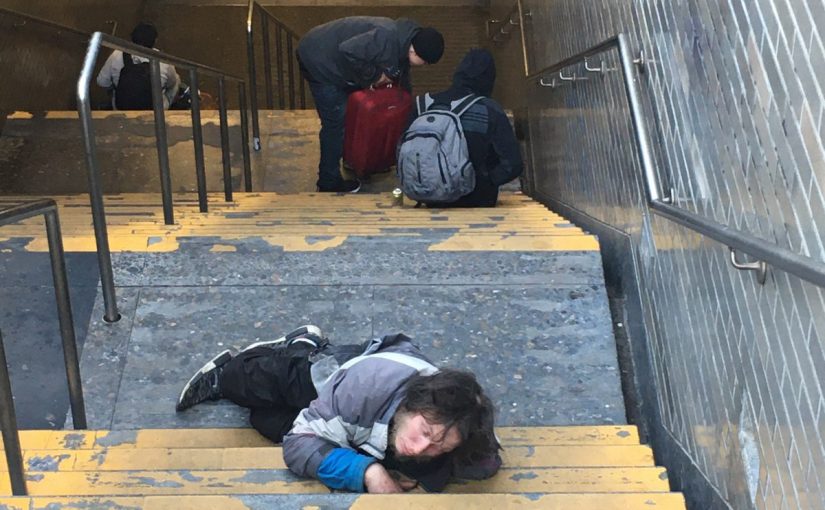Images courtesy of the author
The criminal justice industry struggles to reframe itself and the roles it plays in the current sociopolitical landscape. Because of this, and because police departments need to reflect the communities they serve, they often utilize their resources to form specialized positions and units dedicated to tasks addressing specific community crimes, civil complaints, and quality-of-life issues. Traffic, narcotics, gangs, auto theft, and organized crime are some common units, but there are many more that vary according to the allocation of funds, available resources and staff, and community concerns.
In the late 1990s, the San Jose, California, Police Department had two gang units in a city of 1 million people. The uniformed gang unit patrolled gang-plagued neighborhoods, served warrants, and worked gang-related incidents. They got to know the players, the gang networks, and the expanse of the gangs’ criminal activities. Those officers gained a strong set of specialized skills from their focused work. Being in uniform as a two-man team meant they did not have to wait for a back-up officer and could immediately address any issue or potentially dangerous situations. They were able to work with patrol units on calls for service, saturate high-crime areas, and supplement patrol cases by helping officers on scene with their knowledge of the area’s gangs and gang members.
San Jose Police Department also had the Gang Investigation Unit (GIU) that conducted gang investigations and addressed the bigger gang picture such as obtaining and serving gang injunctions, investigating gang-on-gang crimes, and filing gang cases with the district attorney. The GIU built its knowledge base from data gathered from criminal cases, information reports, field contact cards documenting activities and associates, criminal patterns, and cases that might hold potential information as to whom the violent offenders were.
Addressing the specific needs of the community with specialized units is a way to “work smart” by using more effective policing. If an agency patrols an area rife with traffic violations, then a traffic unit will be more effective than patrol. If auto thefts are happening at an above average rate in specific areas like shopping centers, then an auto theft unit can address this issue with specialized equipment, tools, and training that will produce better results and more solid court cases than patrol trying to stop auto thefts. Focusing time and resources with specific training, resources, and tools to address a specific issue is a common and effective police practice. Yet with that in mind, few police departments and sheriff’s offices have specialized units that focus on mental health, homelessness, and substance use disorders affecting their communities, straining resources, and taking their patrol officers’ valuable time during a shift.
Homelessness and Substance Use Disorders in San Francisco
San Francisco, California, has thousands of people experiencing homelessness who are languishing on the streets, a significant number of whom have substance use disorders and untreated mental health conditions. Many of them, sometimes by the hundreds, made their way into the transit systems on the street level and underground in the Bay Area Rapid Transit (BART) stations. There they mingled with the commuter crowds that during peak hours reached almost half a million people per day. Many used the system to travel to the areas they would steal from, get services, or go to purchase drugs—and in the process, some were using narcotics in full view of the commuters. People sleeping, passing out, or overdosing on the trains, platforms, hallways, and stairs throughout the stations in San Francisco was a common sight. As a result, there was trash, human waste, and drug paraphernalia littered about the trains and stations, causing many calls for service for the four patrol officers working in two-man foot patrol teams for the six San Francisco stations. This was the primary issue faced by BART officers and the largest source of complaints from the patrons, i.e., BART’s community. There were many enforcement actions taken to stem the flow of these issues such as fare evasion enforcement, ops plans, surges with extra officers in a directed patrol to saturate high-crime areas, and mutual support from other departments like the San Francisco Police Department. But the results were usually short lived and limited in effectiveness. The enforcement targets would just move to other areas and come back after the action plans ended.
Enforcement with long-term results was difficult at best, unachievable at worst. One-size-fits-all approaches did not address the intricacies and nuances of the human experience and thus did not address the root causes of behaviors. Deterrence was the goal, but it is a fickle subject, dependent on the intent of the person affected.
The Specific Challenges of Addiction in Vulnerable Populations
When enforcing the law, understanding the mens rea can be a key element to charging a person with a crime. For example, if someone breaks an object that belongs to someone else, specific intent to cause the damage must be established to meet the elements of the statute.
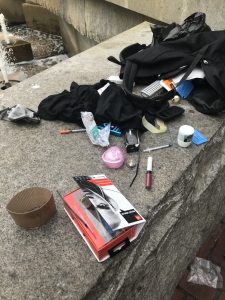 However, changing a person’s mindset or intentions can be a difficult endeavor, and deterrence is not always effective. If a person likes chocolate, it’s possible, in some situations, to deter them from eating it. But you cannot make them stop liking it. When it comes to addictive substances, it gets more complex, but this is precisely why throwing money and services at a problem such as substance use often comes up short on consistent positive results. For example, a city can build a slew of new rehabilitation facilities and spend tremendous amounts of money for programs (San Francisco spends millions on services and outreach), but it will not make a difference if the intended population is not using the resources, due to addiction, mental illness, or other obstacles.
However, changing a person’s mindset or intentions can be a difficult endeavor, and deterrence is not always effective. If a person likes chocolate, it’s possible, in some situations, to deter them from eating it. But you cannot make them stop liking it. When it comes to addictive substances, it gets more complex, but this is precisely why throwing money and services at a problem such as substance use often comes up short on consistent positive results. For example, a city can build a slew of new rehabilitation facilities and spend tremendous amounts of money for programs (San Francisco spends millions on services and outreach), but it will not make a difference if the intended population is not using the resources, due to addiction, mental illness, or other obstacles.
Adding to the problem is the stigma or bias many hold as to why people continue to use drugs even after incarceration or stints in rehabilitation. Sometimes jail will motivate a push for sobriety; other times, an abstinence-based program will kickstart the process; and other times still, a harm reduction program will be enough. This seems contradictory. Anyone who watches or reads the news learns there are diametrically opposed philosophies about which one-size-fits-all method is best for addressing people with substance use disorder.
The questions become dichotomized as incarceration vs rehabilitation and abstinence vs harm reduction. However, it is clear that narcotics biochemically function as “medicines” that relieve immense mental and emotional pain. Using narcotics is often the only way those with substance use disorders can gain true relief from debilitating medical conditions; traumas such as rape, childhood sexual assault, or domestic violence; and mental health disorders such as crippling anxiety. For many, street narcotics work better and are more easily obtained than prescription medications that can be accessed only with approval from a doctor. Some research indicates
Although the brain does not process emotional pain and physical pain identically, research on neural pathways suggests there is substantial overlap between the experience of physical and social pain. The cascading events that occur and regions activated in our brains—and therefore our reactions to the acute pain—appear to be similar.1
A traumatized person with complex PTSD, riddled with intrusive thoughts and flashbacks every day all day, without access to mental health care, and trying to survive on the streets while not knowing where their next meal will be or what the next day will hold for them will often experience acute anxiety. Their need to quiet this anxiety can trigger drug use. Narcotics become their “treatment” (coping mechanism) for a mental health disorder. Even if they are able to access prescription medications, those substances may have more side effects and not feel as effective as street drugs when treating physical and psychological pain and emotional turmoil. To take away a person’s access to narcotics in such a case, without an effective alternative, is to take away their pain relief and increase their suffering and misery.
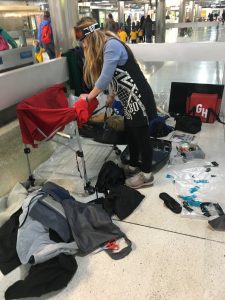 Many people with substance use disorder and/or mental health disorders who are experiencing homelessness do not have access to the health care they need. Some are not aware they have a mental illness or other undiagnosed condition. Many of them have lacked access to health care throughout their entire lives, and—even with health care access—some mental health disorders require extensive and expensive testing procedures for proper diagnosis. Disorders like schizophrenia may not appear until a person is in their 30s. People find themselves suddenly completely disabled and lacking the self-awareness to know or rationally accept they need medications and mental health treatment to care for their basic needs. If they become unable to hold a job, they will lose access to employer-provided insurance. If they are unable to make rational choices or otherwise navigate their life needs, they may be incapable of obtaining resources like Medicaid, applying for disability, making appointments, and knowing where or how to find resources for survival. Family may be unable to assist since HIPAA protections lock them out of their loved one’s health care unless a Release of Information form is signed for each provider. If that person spirals to the point of experiencing homelessness and the severe effects of a mental illness, as so many on the streets have, there is generally no one to call for help. People have a right to be homeless and refuse treatment, and often people with mental health disorders are resistant to help. How a person approaches or feels about treatment for their mental health disorder may diametrically vary from medicated and rational to unmedicated and irrational.
Many people with substance use disorder and/or mental health disorders who are experiencing homelessness do not have access to the health care they need. Some are not aware they have a mental illness or other undiagnosed condition. Many of them have lacked access to health care throughout their entire lives, and—even with health care access—some mental health disorders require extensive and expensive testing procedures for proper diagnosis. Disorders like schizophrenia may not appear until a person is in their 30s. People find themselves suddenly completely disabled and lacking the self-awareness to know or rationally accept they need medications and mental health treatment to care for their basic needs. If they become unable to hold a job, they will lose access to employer-provided insurance. If they are unable to make rational choices or otherwise navigate their life needs, they may be incapable of obtaining resources like Medicaid, applying for disability, making appointments, and knowing where or how to find resources for survival. Family may be unable to assist since HIPAA protections lock them out of their loved one’s health care unless a Release of Information form is signed for each provider. If that person spirals to the point of experiencing homelessness and the severe effects of a mental illness, as so many on the streets have, there is generally no one to call for help. People have a right to be homeless and refuse treatment, and often people with mental health disorders are resistant to help. How a person approaches or feels about treatment for their mental health disorder may diametrically vary from medicated and rational to unmedicated and irrational.
Due to these legal protections, it takes a judge’s order to compel long-term involuntary mental health treatment. Additionally, most mental health medications take weeks to take effect. For short-term mental health involuntary holds, the standard for discharge is essentially a determination if the person has stabilized enough to not be an imminent danger to themselves or others. This is often attained after a bolus of medications are administered that can stabilize some patients within hours to a couple of days. Once an individual is deemed stable, medical staff may no longer be able to justify holding the patient against their will. This set of circumstances leads to the infamous “revolving door” of mental health treatment.
The Intersection with Policing
When police officers are tasked with repeatedly bringing a person back to an intake facility just to watch them be released again and again, sometimes before the officer even writes the report, apathy may set in, especially when the officers feel imposed on to be the societal stop gap for mental health crises. As stated in a 2021 Psychiatry Online article “Cops, Clinicians, or Both? Collaborative Approaches to Responding to Behavioral Health Emergencies,”
Police officers often are the first to respond to behavioral health emergencies, with emergency departments and jails often serving as the default destination for those in a behavioral health crisis.2
Every person is different and has had different life experiences. What works for one person may not work for another. Jail may motivate one person battling substance use disorder to think “I am done waking up in jail,” but the same experience may push another into a negative spiral of a self-deprecating shame and guilt that triggers them into numbing life away in a needle or pipe. Similarly, abstinence may work for one person, whereas harm reduction works for another.
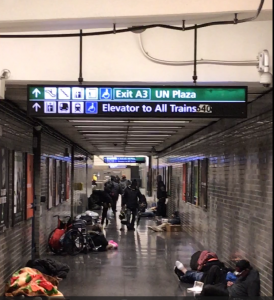 The fact remains that officers will be dispatched to address and assess situations involving homelessness, addiction, and mental health. Where the power lies is in establishing a higher level of trained officer armed with a set of tools and training to better utilize resources and case management to work toward mitigating behaviors that trigger 911 responses. There is a reason that officers are more appropriate than clinicians in this model.
The fact remains that officers will be dispatched to address and assess situations involving homelessness, addiction, and mental health. Where the power lies is in establishing a higher level of trained officer armed with a set of tools and training to better utilize resources and case management to work toward mitigating behaviors that trigger 911 responses. There is a reason that officers are more appropriate than clinicians in this model.
According to the American Psychological Association website article, “Building Mental Health into Emergency Responses,”
It’s estimated that at least 20% of police calls for service involve a mental health or substance use crisis, and for many departments, that demand is growing. In a nationwide survey of more than 2,400 senior law enforcement officials conducted by Michael C. Biasotti, formerly of the New York State Association of Chiefs of Police, and the Naval Postgraduate School, around 84% said mental health–related calls have increased during their careers, and 63% said the amount of time their department spends on mental illness calls has increased during their careers.3
There are various types of outreach workers who differ in education level and certification from case managers to social workers. However, the common factor is that they are not expected to respond to 911 crises or to go into people’s homes where violence may be occurring or dangerous situations are at play and individuals might be so irrational, intoxicated, delusional, or dangerous they may need to be restrained or require specialized crisis de-escalation. In other words, clinicians are generally educated and trained to work in controlled environments with resources at hand for a higher level of care, if necessary.
Police officers, however, are trained to work in chaotic environments and bring authority and control to those environments, de-escalate, and know when action must be taken for the safety of everyone on scene. They understand the dynamics and risk factors of working in an uncontrolled environment where one mistake or miscalculation can have potentially lethal consequences. A police officer watching a social worker engage on scene can cause that officer to lose focus on safety issues as their attention is split between the environment and the engagement. If an officer needs to intercede, they may have to interrupt the clinician, which can cause momentary confusion and hesitation or even conflict. It takes only a moment for a situation to go from passive to aggressive.
A crisis is often a rapidly unfolding series of events where time is of the essence. Split-second decisions may need to be made, and the wrong decisions may have disastrous, even life-threatening repercussions. This is why the education, training, protocols, and procedures for a professional working in crisis situations in the field can vary widely from a peer working in a controlled setting like a hospital.
A Hybrid Approach: CIT 2.0
The purpose of the primary assessment in emergency medicine is to stabilize the patient to prevent death. Once they are assessed and stabilized, the secondary assessment is completed, during which a more thorough examination is conducted and non-life-threatening injuries are assessed and addressed. This is a solid protocol that is similar to how police officers approach and take control of a scene. Safety is the first priority; once threats are neutralized or mitigated and the situation has stabilized, a more thorough investigation can be completed.
These two processes can be merged into a hybrid role where safety, medical urgency, and mental health stabilization are all immediately addressed as a primary assessment for the hybrid officer who moves beyond the scope of police responsibilities to also function in a capacity similar to a combination of peer support specialist, outreach worker, and case manager.
In some departments, police officers are trained and certified as EMTs or in advanced first aid due to the geographical regions they work in where medical assistance may take an extended amount of time to arrive. These officers can assess the criminality as well as medical conditions of a scene and know how to prioritize medical needs versus criminal investigation. An added component to the medical and mental health skills taught to some officers who could respond to mental health crises or follow up on mental health–related incidents, especially for repeat contacts, would wield benefits that, in the long run, could save the department and the community time, resources, money, and lives.
In medicine, patient history is as valuable if not more than any lab test. Police officers are trained and experienced in interviewing and investigating. The police officer’s primary function at a call for service is to obtain information and facts to be written in a detailed report—in short, to collect a history. These investigative and documentation skills can easily translate to responses to mental health cases, especially when officers collaborate with professionals in the mental health and medical community. This collaboration increases an officer’s knowledge and skills, which can serve short-term contacts, as well as reach long-term goals.
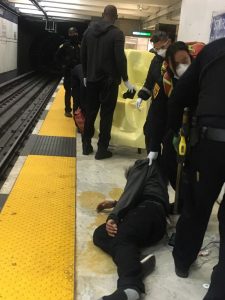 If police officers can be trained to be specialists in myriad arenas such as advanced first aid, they can be trained in mental health assistance to have capabilities similar to those of case managers and outreach workers. As with the San Jose gang unit officers, units working the front lines and connecting with those experiencing homelessness, building relationships, linking people to families and health care providers, and working with stakeholders for long-term resolutions can mitigate the impact that homelessness, addiction, and mental health has on a community.
If police officers can be trained to be specialists in myriad arenas such as advanced first aid, they can be trained in mental health assistance to have capabilities similar to those of case managers and outreach workers. As with the San Jose gang unit officers, units working the front lines and connecting with those experiencing homelessness, building relationships, linking people to families and health care providers, and working with stakeholders for long-term resolutions can mitigate the impact that homelessness, addiction, and mental health has on a community.
As much as those officers who “didn’t become a cop to do social work” would like to think these issues will go away on their own, they won’t. There will always be calls for service related to persons experiencing homelessness, addiction, and mental health issues and distressed community members who will demand to know what steps are being taken to address related quality-of-life issues. There will always be 911 calls reporting a new or repeated crisis. The work will always be there, so the only way forward is to put the same effort into addressing it that departments make for other specific issues affecting the community.
Crisis intervention teams (CIT) have been around for years, but the training topics for those teams are limited to de-escalation and recognition, which are rudimentary for mitigating incidents and achieving long-term resolutions, especially for repeated contacts. The next level, CIT 2.0, is designed to educate and train officers to specialize in mental health, substance use disorders, and homeless outreach.
CIT 2.0 combines basic-level medical skills, mental health skills, and case worker skills to supplement patrol work in the community. This model reduced crime in the BART system as connections were made and the traditional adversarial police role was substituted for the hybrid policing role that is rooted in empathy and applying case management. Like the San Jose Police Department gang model, one aspect of the work is to have a finger on the pulse of the community, to be aware of the ever-shifting dynamics and challenges, and to get to know the players and their roles and how they interact. This is necessary to understand motivations and where people are in the moment, so that the officer in a hybrid role can meet them there. If a person is deep into their drug use, numbing psychic pain, forced conversations about detoxing could push them away and alienate them. Mutually agreeing to person-centered appropriate goals creates an enhanced bond and connection, and that officer then becomes the go-to person. The officer can become the person they come to for advice, requests, and even announcements that they are ready for detox and rehab, as opposed to walking into a clinic or contacting a city paid case worker.

In the field where this methodology was tested, where trust was built, people living on the street with substance use disorder noticed the officer was genuine and not pushing a professional agenda onto them. Many said just “seeing them” was the most important aspect of the connection and made them feel genuinely cared for as a person by another person—an authority figure— thus drawing them away from self-loathing and defeat to a new mindset rooted in hope.
Humans are social creatures designed to integrate into a community. When they are isolated, mental health and addiction become more likely coping mechanisms and hope is lost. When a person is living in isolation, they are often ignorant of the events taking place in the world from which they are isolated—no news, without family or friends—and they may wish to reconnect with humanity, make an attempt to reintegrate into the community, or reconnect with family and friends for help and to rebuild relationships. But they often have nowhere to go. Programs operate during standard business hours and often require screening and appointments. This is not true for policing. Police officers are always there and can always be found. That availability translates to consistency, which is one of the most important aspects in recovery for and relationship building with traumatized people.
A Two-Stage Process
The first level of the hybrid officer role is to have officers trained to perform similarly to the San Jose Police Department street gang unit, dialed into the community, making contacts, and gathering information—being visible and available for needs in the moment. Officers can keep the momentum going by solidifying relationships and bonds and by facilitating communication with families via cellphone and mail delivery, which reduce the feelings of alienation and help bring vulnerable community members back into the fold of their loved ones. Even messaging in times of emergencies reduces feelings of regret for missing important family events. This makes the police available for the two key factors of recovery—timing and motivation. Officers are there for the timing, so when motivation for change arises, the process can be started immediately, before desire or motivation wanes, thus moving the needle forward.
The next level of the hybrid officer is the secondary assessment level. Here an investigative approach is taken for the purpose of case management, problem-solving, and seeking resolutions. Cases are established with a hierarchy of needs and urgency to focus time and efforts when and where they are needed the most for the sake of the person and the community. This is the stage where coordination with stakeholders, allies, and resources takes place to ensure professional bonds are developed to enable effective assistance. The role is a cross between being a detective and outreach case manager.
These CIT 2.0 officers can respond to incidents where the subject is known to them and work with patrol liaison officers to keep them abreast of new contacts, cases, and relevant information for the unit to track as gang liaison officers do for gang units. This holistic approach with wraparound services led to many successes and improvements in conditions and repeated situations in San Francisco.
Small Start, Big Impact
The work outlined herein formed the methodology that was followed in the field by the author, in between calls and during one dedicated overtime shift per week. More than 50 families were connected or contacted, more than 130 cases were established, and many people experiencing homelessness were reunited with family and reentered the world out of which they fell. One officer, one day a week, did this much; a unit with several dedicated officers could accomplish measurable, quantifiable change on a scale not yet realized. The exact impact will remain unknown until it is piloted on a multiagency or national level. d
Notes:
1Nicole F. Roberts, “Emotional & Physical Pain Are Almost The Same—To Your Brain,” Forbes, February 14, 2021.
2Margaret E. Balfour et al., “Cops, Clinicians, or Both? Collaborative Approaches to Responding to Behavioral Health Emergencies,” Psychiatry Online, October 20, 2021.
3Ashley Abramson, “Building Mental Health into Emergency Responses,” American Psychological Association, July 1, 2021.
Please cite as
Eric Hofstein, “Hybrid Officers for Holistic Public Safety: A Way Forward for Policing,” Police Chief Online, August 14, 2024.


